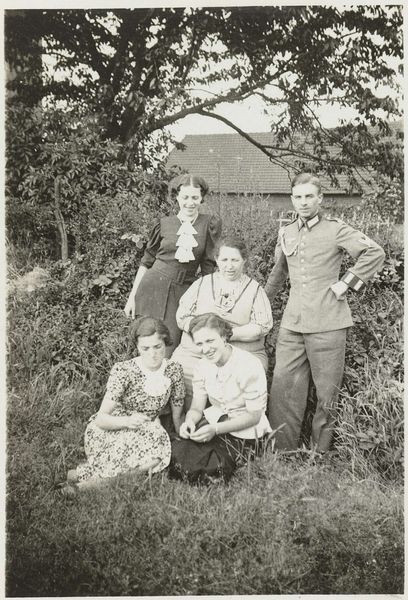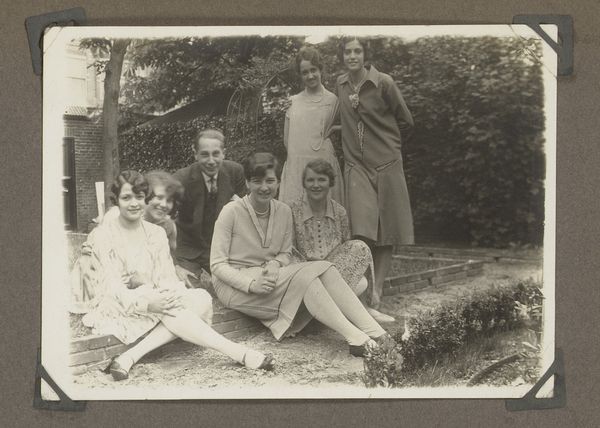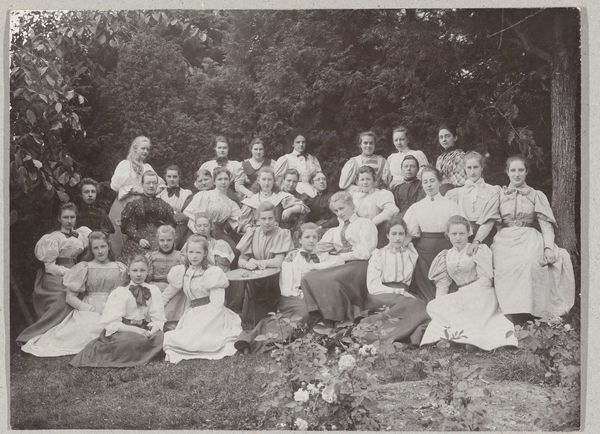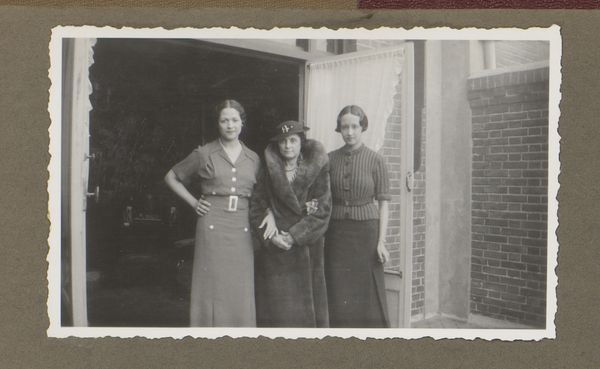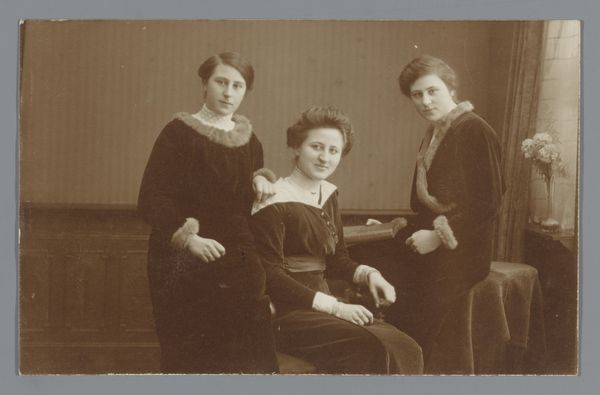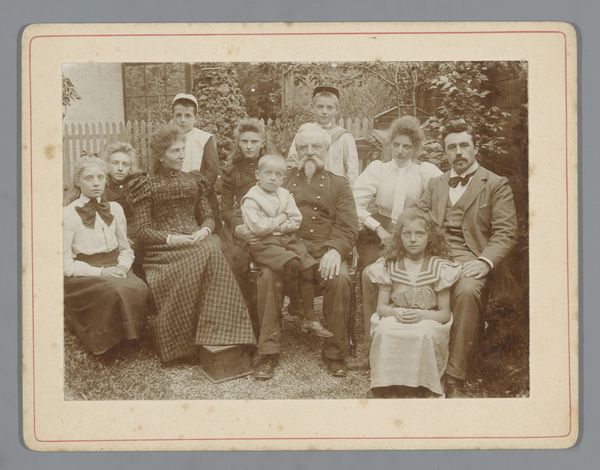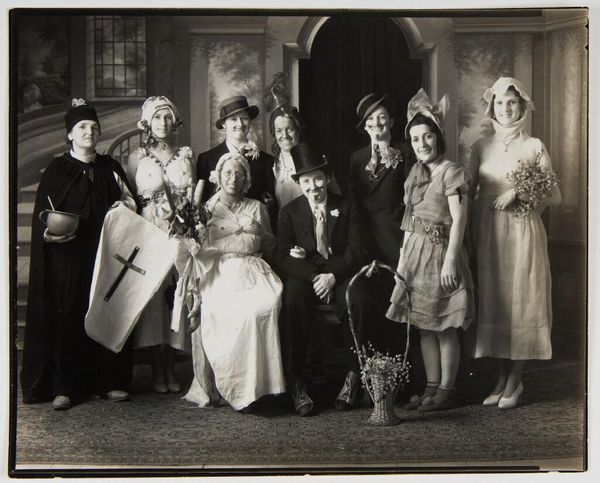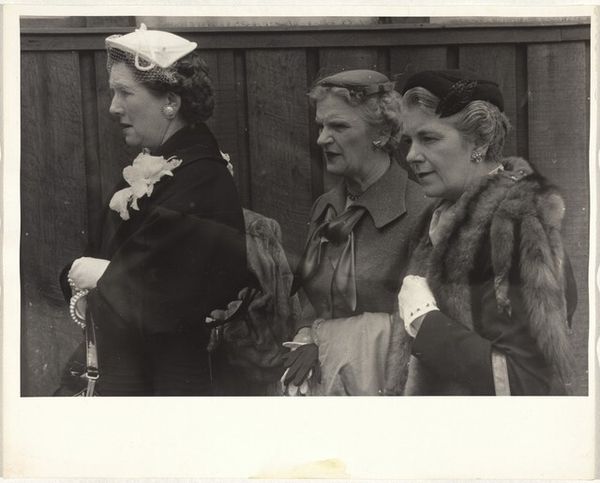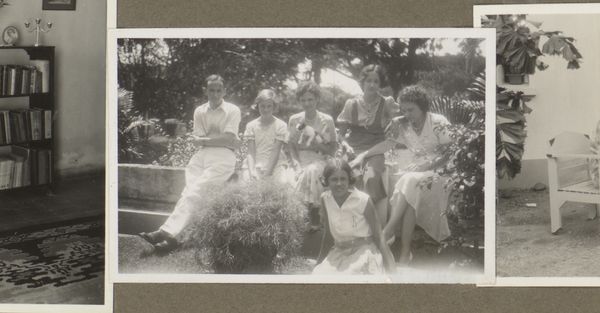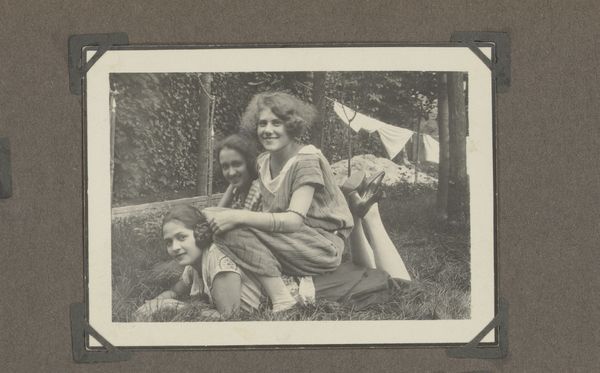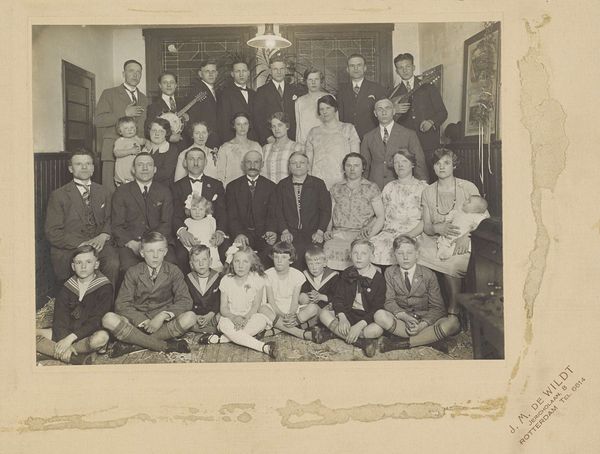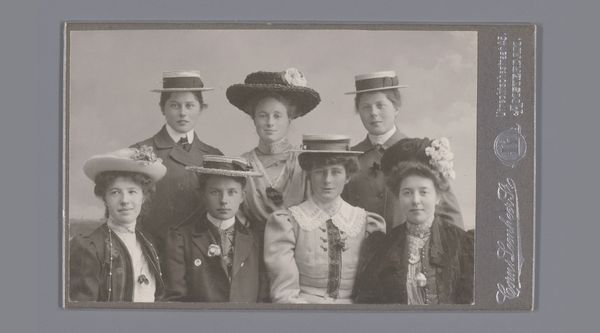
Groepsportret van deelnemers aan een cursus van de Koloniale School voor Meisjes en Vrouwen te 's-Gravenhage c. 1930s - 1940s
0:00
0:00
print, photography, graphite
#
portrait
# print
#
photography
#
group-portraits
#
graphite
#
realism
Dimensions: height 92 mm, width 116 mm
Copyright: Rijks Museum: Open Domain
Editor: Here we have "Groepsportret van deelnemers aan een cursus van de Koloniale School voor Meisjes en Vrouwen te 's-Gravenhage," a photograph by Hans (sr.) Nieuwenhuis, likely from the 1930s or 40s. It has such a formal feel, yet the women look relaxed. What catches your eye? Curator: I’m immediately drawn to the colonial context and the "school" mentioned in the title. Consider what kind of labor these women were being prepared for. What materials shaped their understanding of that labor? The clothes they wear – simple dresses, sensible shoes – suggest a practicality. The image functions less as a celebration of individuality, and more as a document of a particular social engineering. How does the act of photographic portraiture itself contribute to this process? Editor: So you're seeing the photo as a product of its time, less about individual personalities and more about the system at play? Curator: Precisely. The graphite in the print isn't just a medium, it’s evidence of production, of a deliberate effort to represent and, arguably, normalize the colonial project. Who commissioned the portrait and who was the intended audience? This shapes our understanding as much as the women's expressions. The composition itself feels deliberate. Editor: I hadn't considered the graphite as a material that connected so directly to colonial ideology. That's a fascinating way to frame it. I guess I was too focused on their smiles. Curator: And that's understandable! But a materialist lens urges us to go beyond the surface and investigate the conditions of creation and reception. Where did that graphite come from and who processed it? Even a 'simple' group portrait carries complex implications. Editor: I definitely have a lot to think about. It's a good reminder to look at the bigger picture – the means and context of production. Thanks! Curator: Indeed. Considering materiality unveils hidden layers of meaning in seemingly straightforward images.
Comments
No comments
Be the first to comment and join the conversation on the ultimate creative platform.

